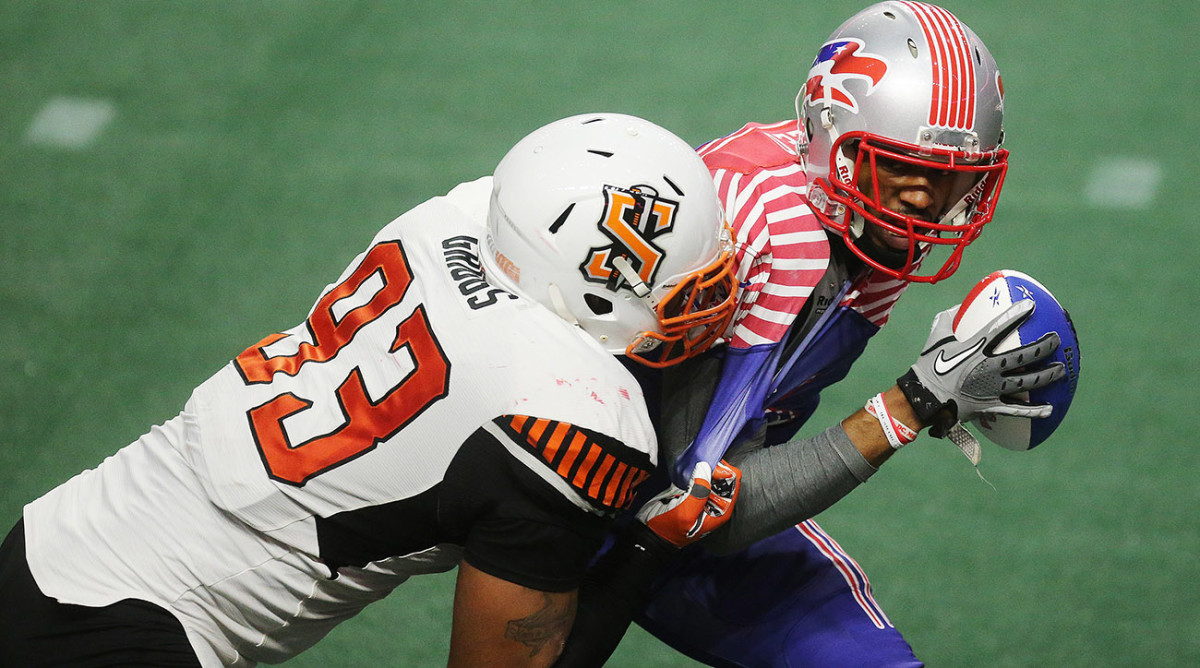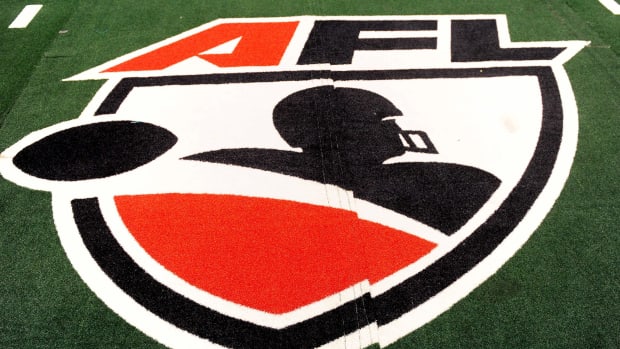Protecting the QB in Salt Lake
The most important element of a successful passing game in the Indoor Football League is pass protection. Keeping the quarterback protected is the most critical element of being able to both strike quickly down the field and move the chains with an efficient passing attack. Poor pass protection leads to hits on the quarterback, errant throws, sacks, and turnovers. Let’s take a look at basic pass protection principles in the IFL and variables in keeping the quarterback “clean”.
Launch Point
Every pass is designed to be thrown from a certain area and depth that we will refer to as the quarterback launch point. It is critical that the offensive line understands the quarterback launch point and the depth that the quarterback will be setting up to pass at for optimum protection.
One-Step Drop
Used from under center or catch-and-throw from the shotgun alignment. The one-step drop is primarily on quick screen and hot route concepts. Often the quarterback will throw this ball without getting his fingers on the laces of the football to get it out of his hands quicker in the shotgun.
Three-Step Drop
Used from under center on quick game packages, and a catch and settle in the shotgun. Used on quick breaking and timing patterns in the passing game.
Five-Step Drop
Used from under center on deep to intermediate passing schemes and is often termed as a three step drop from the quarterback when in the shotgun.
Movement Pass
This is utilized when the quarterback launch point will be moved outside of the pocket and the quarterback will break the perimeter of the offensive box such as on a sprint-out or designed quarterback bootleg or play-action pass concept.
Restrictions on the Defense
Indoor Football League rules limit the type of pass rush techniques and blitz packages that an offense will encounter.
Defensive linemen may not stunt or twist in their alignments and only one linebacker may blitz who is aligned at the back of the 5 yard defensive belt and is stationary at the snap of the ball. This player may only blitz through the A-gap or between the nose guard and the defensive end. The defense has the ability to zone-drop defensive linemen into pass coverage at the snap.
Base Pass Protection Principles
Pass protection can be reduced to a very simple man pass protection scheme due to the fact that the defense may not run “games” upfront and the limits placed on blitzing.
In a base man protection scheme, the offensive line will vertical set the man aligned over them taking their vertical pass set with the goal of staying as square to the line of scrimmage as possible. This protects against a hard charging inside rush by a defender such as the defensive end on the guard through the A-gap.
Offensive linemen must understand that the quickest way to get to the quarterback launch point is to their inside. Guards must also be aware of getting their body turned perpendicular to the line of scrimmage as they block a wide rushing defensive end, as that defensive end will often utilize a “rip” move to work back inside under the out of position pass protector to the quarterback. In summary, our three offensive linemen will be responsible for their three defensive linemen in all man pass protection schemes.
Handling the Blitz
There are two different ways that we can handle a 4th rusher (Blitzer) depending on formation.
If aligned in a formation with a running back stationed in the backfield, the running back will be responsible for the blitzing linebacker. The running back can easily identify the defender pre-snap and will key him to determine if he is blitzing prior to the back releasing into a pass route. This is often termed as “check-release” protection for the running back.
In a one-back situation the numbers are even for the offense as there are four potential protectors vs. four potential defensive rushers. In some game-planned situations teams will often have the running back “chip” or help an offensive lineman block an outstandingly talented defender to slow his pass rush.
In empty formation situations there will be no running back in the backfield and four potential receivers.
The defense can counter with a potential of four rushers against the offenses three potential protectors. The offensive line will utilize their man protection principles with the quarterback being responsible for handling the 4th rusher (blitzer). Against the blitz, the quarterback will need to get the ball out of his hands to an open receiver prior to the rusher pressuring him. This is often referred to as a “hot route” situation where one or more of the receivers will be charged with recognizing that the linebacker has blitzed and cutting his route short or replacing the coverage area he has vacated quickly with his route.
Teams will spend extensive time drilling this with their quarterbacks and receivers to ensure that they are on the same page in these situations.





